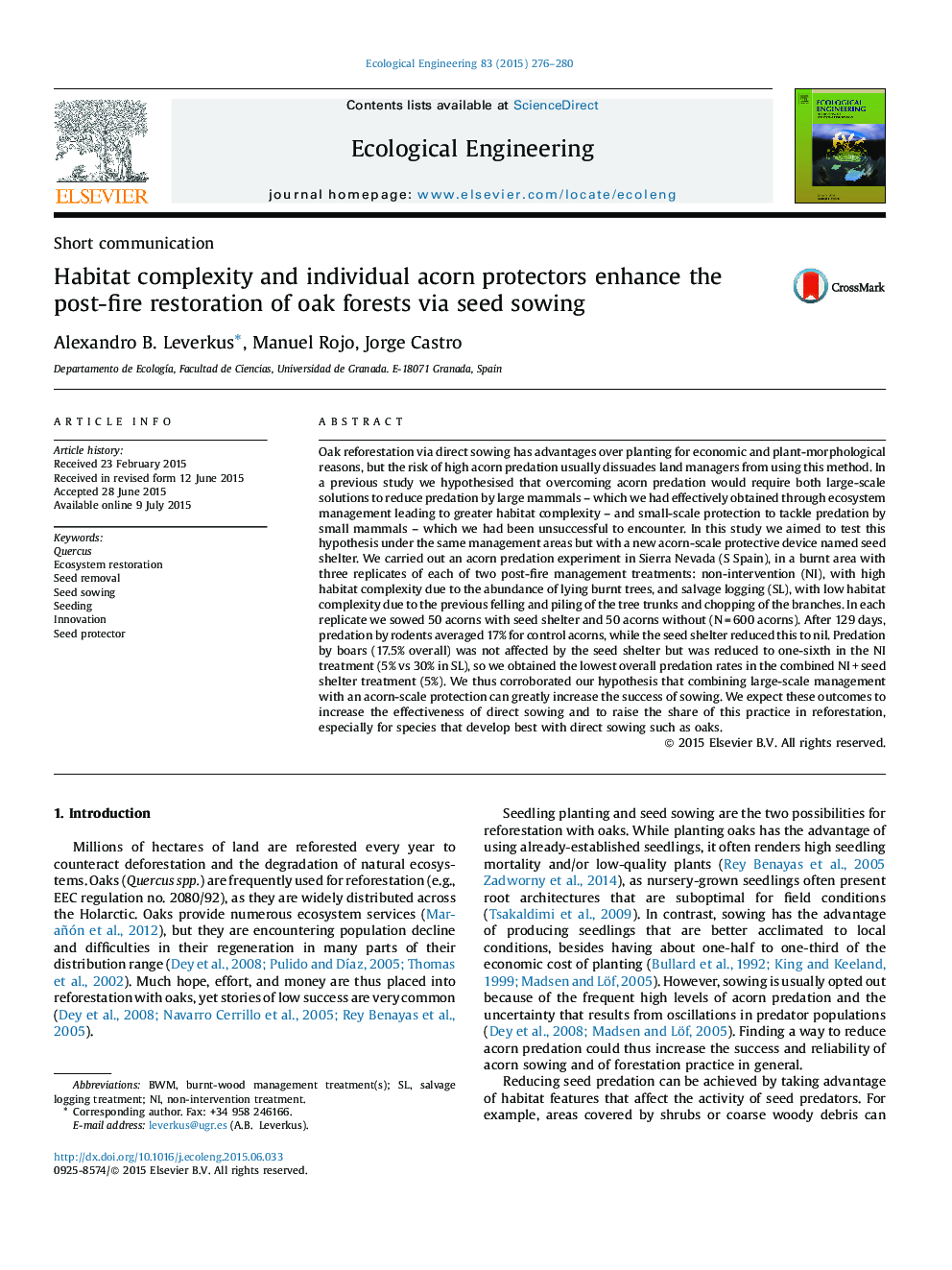| کد مقاله | کد نشریه | سال انتشار | مقاله انگلیسی | نسخه تمام متن |
|---|---|---|---|---|
| 4388876 | 1618016 | 2015 | 5 صفحه PDF | دانلود رایگان |
• We tested a new device, the “seed shelter”, to prevent acorn predation after sowing.
• The seed shelter eliminated predation by rodents but not by wild boars.
• Seed shelters in complex post-fire habitat yielded maximum acorn survival.
• This simple device may enhance and cheapen restoration of large-seeded species.
Oak reforestation via direct sowing has advantages over planting for economic and plant-morphological reasons, but the risk of high acorn predation usually dissuades land managers from using this method. In a previous study we hypothesised that overcoming acorn predation would require both large-scale solutions to reduce predation by large mammals – which we had effectively obtained through ecosystem management leading to greater habitat complexity – and small-scale protection to tackle predation by small mammals – which we had been unsuccessful to encounter. In this study we aimed to test this hypothesis under the same management areas but with a new acorn-scale protective device named seed shelter. We carried out an acorn predation experiment in Sierra Nevada (S Spain), in a burnt area with three replicates of each of two post-fire management treatments: non-intervention (NI), with high habitat complexity due to the abundance of lying burnt trees, and salvage logging (SL), with low habitat complexity due to the previous felling and piling of the tree trunks and chopping of the branches. In each replicate we sowed 50 acorns with seed shelter and 50 acorns without (N = 600 acorns). After 129 days, predation by rodents averaged 17% for control acorns, while the seed shelter reduced this to nil. Predation by boars (17.5% overall) was not affected by the seed shelter but was reduced to one-sixth in the NI treatment (5% vs 30% in SL), so we obtained the lowest overall predation rates in the combined NI + seed shelter treatment (5%). We thus corroborated our hypothesis that combining large-scale management with an acorn-scale protection can greatly increase the success of sowing. We expect these outcomes to increase the effectiveness of direct sowing and to raise the share of this practice in reforestation, especially for species that develop best with direct sowing such as oaks.
Figure optionsDownload as PowerPoint slide
Journal: Ecological Engineering - Volume 83, October 2015, Pages 276–280
